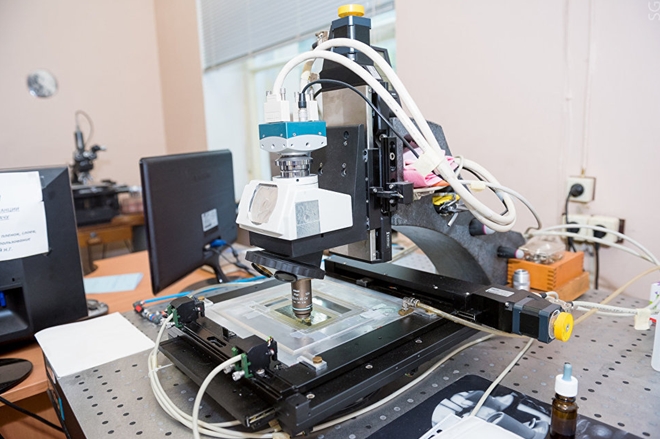Scientists invent device allowing them to 'see' kilometers into Earth
Researchers from Russia's National University of Science & Technology, the Russian Academy of Sciences' Institute of Physics, and Moscow State University's Institute of Nuclear Physics have joined their efforts to create a special tracking device which allows geologists to create accurate 3D maps of the environment deep beneath the planet's surface.
The trackers use a form of muon tomography, the technique using cosmic ray-generated muon particles, to radiograph underground objects and geological structures.
 |
The denser the matter, the faster the muon particles' presence wanes. With the help of muon tracking detectors, solid objects can be observed to track the passage of muons through its cavities. Three detectors placed around an object are usually sufficient to create a three dimensional map.
Muons are detected with the help of a series of photographic plates layered with silver bromide, used to reveal and match the illuminated areas, building a trajectory of the exposure. The smaller the bromide granules and the more accurate the matching algorithms, the more correct the 3D picture of the object.
 |
Speaking to RIA Novosti, MISiS Rector Alevtina Chernikova emphasized that this technology has a broad range of potential applications. "After deciphering the detector's readings, it is possible to compile a three dimensional picture of a variety of objects, from a meter-sized cavity in the soil…to a map of the caves in a mountain," she said.
MISiS specialists are presently working on software to improve the decoding of the trackers, and on the protection of tracker sensors from the harsh environment which can be found in underground holes.

